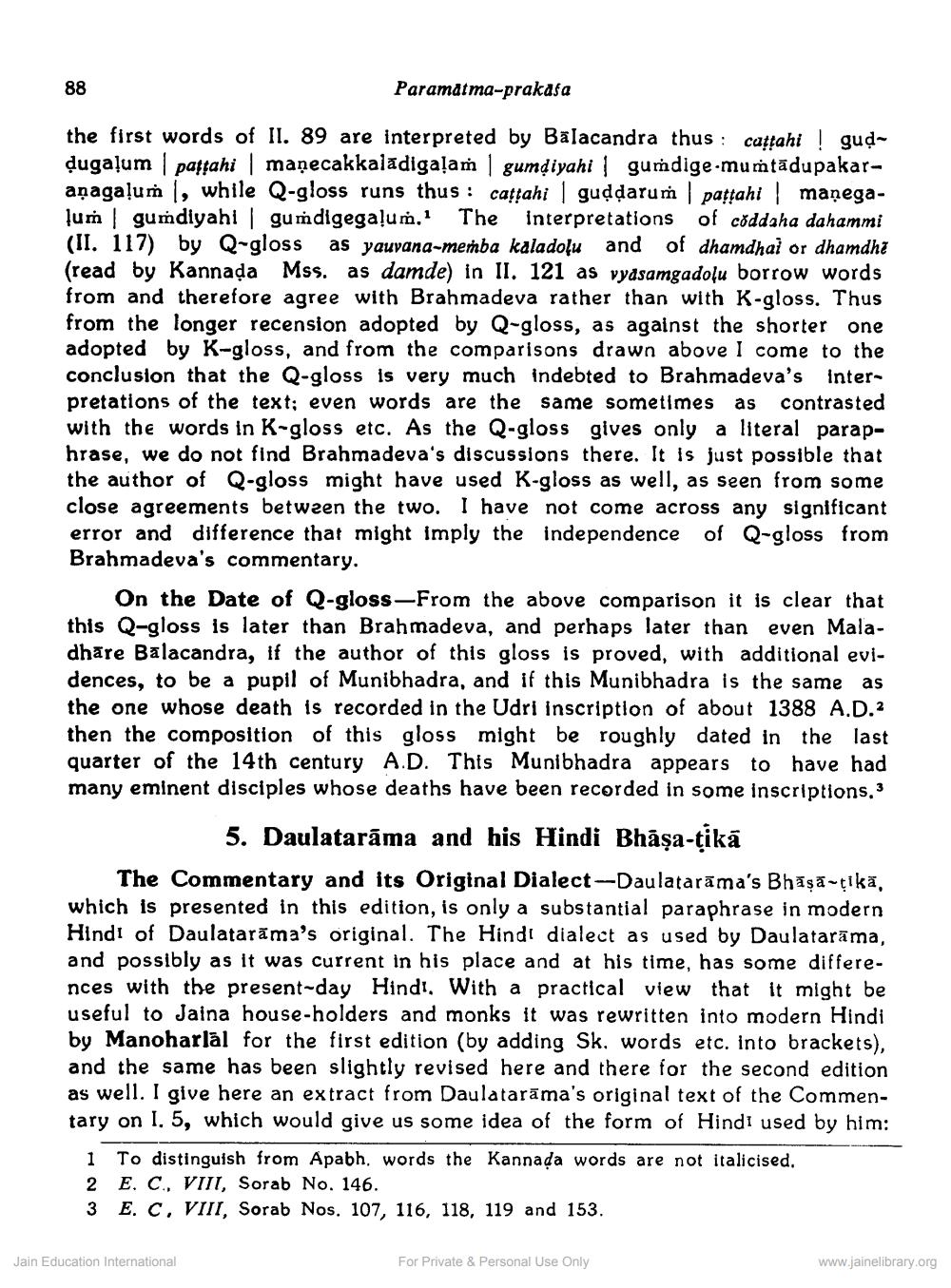________________
88
Paramat ma-prakasa
the first words of II. 89 are interpreted by Balacandra thus : cattahi ! guddugaļum paftahi manecakkaladigaļam gumdiyahi gumdige.mumtādupakaraņagaļum l, while Q-gloss runs thus : cattahi | guddarum pattahi manegalum gumdiyahi gumdigegaļum. The interpretations of coddaha dahammi (II. 117) by Q-gloss as yauvana-memba kaladolu and of dhamdhai or dhamdha (read by Kannada Mss. as damde) in II. 121 as vydsamgadolu borrow words from and therefore agree with Brahmadeva rather than with K-gloss. Thus from the longer recension adopted by Q-gloss, as against the shorter one adopted by K-gloss, and from the comparisons drawn above I come to the conclusion that the Q-gloss is very much indebted to Brahmadeva's interpretations of the text; even words are the same sometimes as contrasted with the words in K-gloss etc. As the Q-gloss gives only a literal paraphrase, we do not find Brahmadeva's discussions there. It is just possible that the author of Q-gloss might have used K-gloss as well, as seen from some close agreements between the two. I have not come across any significant error and difference that might imply the independence of Q-gloss from Brahmadeva's commentary.
On the Date of Q-gloss-From the above comparison it is clear that this Q-gloss is later than Brahmadeva, and perhaps later than even Maladhäre Balacandra, if the author of this gloss is proved, with additional evidences, to be a pupil of Munibhadra, and if this Munibhadra is the same as the one whose death is recorded in the Udri inscription of about 1388 A.D.2 then the composition of this gloss might be roughly dated in the last quarter of the 14th century A.D. This Munibhadra appears to have had many eminent disciples whose deaths have been recorded in some inscriptions, 3
5. Daulatarāma and his Hindi Bhāşa-tikā The Commentary and its Original Dialect--Daulatarāma's Bhaşa-tika, which is presented in this edition, is only a substantial paraphrase in modern Hindi of Daulatarāma's original. The Hindi dialect as used by Daulatarāma, and possibly as it was current in his place and at his time, has some differences with the present-day Hindi. With a practical view that it might be useful to Jaina house-holders and monks it was rewritten into modern Hindi by Manoharlal for the first edition (by adding Sk, words etc. into brackets), and the same has been slightly revised here and there for the second edition as well. I give here an extract from Daulatarāma's original text of the Commentary on I, 5, which would give us some idea of the form of Hindi used by him:
1 To distinguish from Apabh. words the Kannada words are not italicised. 2 E. C. VIII, Sorab No. 146. 3 E, C, VIII, Sorab Nos. 107, 116, 118, 119 and 153.
Jain Education International
For Private & Personal Use Only
www.jainelibrary.org




